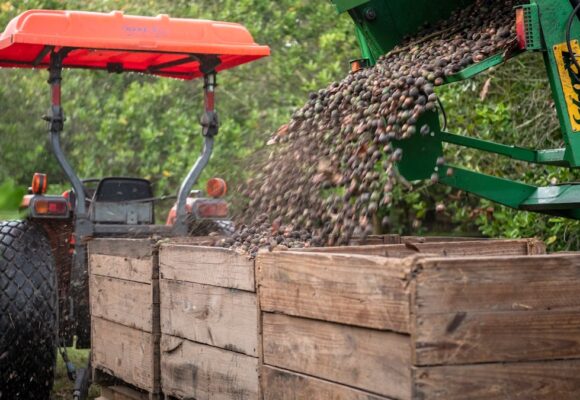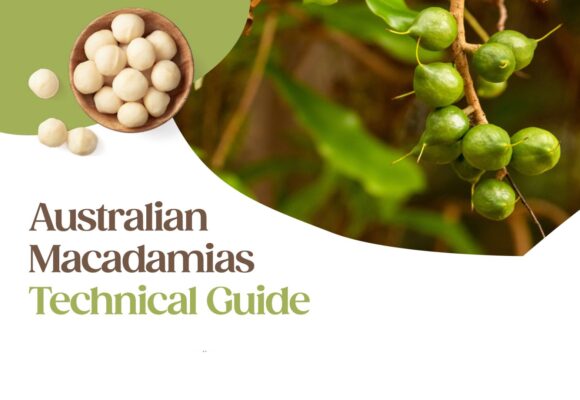For several years, the Australian macadamia industry has been focused on driving demand for macadamias ahead of a forecast rise in global supply. New market development is an important element of this strategy, and Australia’s industry has successfully executed new market development programs in China and South Korea, introducing consumers to macadamias and leveraging free trade agreements (FTAs) in both markets.
India has been on the Australian macadamia industry’s radar for some time as the next major market for our product. Here we examine the opportunity India represents for macadamias, the complexities that come with it and why now is the ideal time to undertake an entry strategy into this fascinating market.

Major shifts unfolding
At the 2022 Australian Nut Conference, business development specialist Yemee Fernandes gave a keynote presentation on India market expansion. The co-founder and director of Four Pillars Trading (FPT), Yemee helps Australian brands expand their footprint in India by targeting the discerning Indian consumer.
Yemee spearheaded research* carried out by FPT for the Australian macadamia industry examining the consumption of nuts in India. She says there are several factors that make now the time to develop and execute an Indian market entry strategy for Australian grown macadamias.
“India is the fastest growing large economy in the world, and there have been some remarkable shifts particularly in the last couple of years,” she says.
“It has long been a highly fragmented market that is difficult to penetrate but it is becoming more organised, and that’s making it a more accessible market than it was a couple of years ago.”
Yemee says the Covid-19 pandemic has created opportunities for products such as macadamias that have proven health credentials. “Covid has heightened the focus on food, health and wellbeing in India. There is huge interest in protein, immunity and healthy ingredients, and buying habits are reflecting this.”
However the most significant change to occur in India recently is the country’s rapid digitisation, and it’s this that will be the game-changer for many brands who aspire to make a mark on the Indian market.
More connected than ever before
Growth in Indian mobile data consumption and mobile phone ownership has been enormous, and this means more Indian consumers than ever before are discovering and shopping for new products and brands from the palm of their hand.
Of India’s 1.4 billion population, 658 million use the internet (47%) and 91% of those do so via a mobile phone. Since 2018, the number of internet users has grown 5-8% per year, with a rise of 81 million users since January 20201. By 2030, it’s expected that India will have more than 850 million internet users2.

Yemee is quick to caution that while the rise in digitisation has seen an increase in direct to consumer communication and e-commerce transactions, a B2C strategy alone is not enough.
“Of course it’s important to drive demand among consumers, but it must be underpinned by a robust B2B strategy to ensure your product is available in the right channels. The path to purchase should be as seamless as possible.”
Digitisation has also driven the rise of influencers in India, both global influencers – essentially celebrities who attract a very affluent audience – and micro influencers who boast fewer followers but are highly engaged with them. This has seen a rise in influencer marketing as brands try and align themselves with credible third parties who can amplify key messaging.
A new free trade agreement sweetens the macadamia opportunity
For the macadamia industry, the icing on the cake of opportunity is the Australia-India FTA that was announced recently.
Due to enter into force in late 2022, it will see tariffs on imports of Australian macadamias in India reduced from the current rate of 30% down to zero over the next seven years.
With the removal of the tariff will come more competitive macadamia pricing in the Indian market. Ensuring that we begin the task of sharing the many layers of the macadamia story with Indian consumers in anticipation of this will help the Australian industry to capitalise on this advantage.
Unpacking the opportunities for macadamias in India
There’s an exciting and sizeable opportunity for Australian grown macadamias in India, but there is a lot of work to be done.
Indian consumers love nuts. They associate them with health and good nutrition, and regularly use them in a variety of ways including soaking, cooking, snacking, with drinks and alcohol and for gifting, hosting and festivals (there are 300 each year). They’re also seen as exotic, a status symbol and an indication of a family’s affluence. Origin matters to Indian consumers, and they will ask for products by origin when shopping, for example almonds from California.

Australia is also held in high regard for its clean, green and positive reputation. MasterChef Australia enjoys sky-high popularity in this market, and consumers have become quite experimental in their home kitchens.
Collectively these factors set a solid foundation to introduce India’s consumers to Australian macadamias. However, while familiarity with nuts and Australia is high, there is much to be done in terms of educating Indian consumers on what a macadamia is. Awareness of macadamias in India is currently tracking at around 35%, significantly lower than established markets where awareness sits at about 80%.
Raising the profile of macadamias among the Indian target market will be key, as will engaging with the trade to help the commercial sector capitalise on the opportunities that will arise as Indian consumers get to know and love macadamias.
Indian consumers love a story and Australian grown macadamias have a multi-layered and compelling narrative to tell. For the first time, this can be done digitally to more than half a billion people. The conditions are right to stake our space in the Indian market.
Hitting the right target
As in all other markets, a premium positioning will be developed for Australian grown macadamias in India. To execute this successfully, it’s essential that we identify and target the right consumers. As Yemee Fernandes points out, India is an incredible country, but it’s full of “chaos, randomness and complexity.”
“There are 1.4 billion people and 270 million homes, but really there are ‘three Indias’,” she explains.
“India A is the upper class and contains around 50 million households. These consumers use nuts regularly for snacking and soaking. India B is the middle class with 100 million homes, and for these people nuts are considered a treat. India C is the least affluent class with 120 million homes and limited nut consumption.”

The macadamia industry will target the niche yet sizeable India A segment. At a more granular level, there are personas within this group that have been identified as holding the most immediate potential for macadamias.
- The mother/carer: Women in their 40s who care for their children, spouse and parents. Nut consumption is a family ritual.
- Fitness enthusiast: Professional men and women in their 30s and 40s in urban cities with busy lifestyles. They consume nuts for their longevity and disease preventing properties.
- House host: Found across all ages, from couples living in a nuclear family setup to affluent families. They consume a wide variety of nuts for their health benefits and enjoy experimenting with new flavours and varieties.
Effectively penetrating the fragmented retail environment will be critical, with many channels to be considered including wholesale, e-commerce, neighbourhood grocery stores, specialised bricks and mortar nut stores, supermarkets and premium grocery stores.

Balancing the risks and rewards
Entering new markets always presents challenges and India will be no exception. Navigating changes in duties and tariffs, the market’s price sensitivity, regulatory and compliance requirements, and contract negotiations will be among the hurdles.
But the rewards will be there if we get the strategy right. Macadamias hold huge potential for an array of Indian packaged food products, bakeries, boutique patisseries, private label, skin and personal care, and even children’s food products, considering India’s lack of food allergy issues.
We look forward to sharing the Australian Macadamias story in this exciting market.
* The work was a part of the Nut Export Expansion Program funded under Agriculture Trade and Market Access Cooperation program (ATMAC), by the Commonwealth of Australia represented by the Department of Agriculture, Water and the Environment (DAWE).
References:
-
Simon Kemp / Kepios, Digital 2022 – India – The Essential Guide To The Latest Connected Behaviours
-
Peter N Varghese – An India Economic Strategy to 2035 Navigating from Potential to Delivery – A report to the Australian Government, 2018


